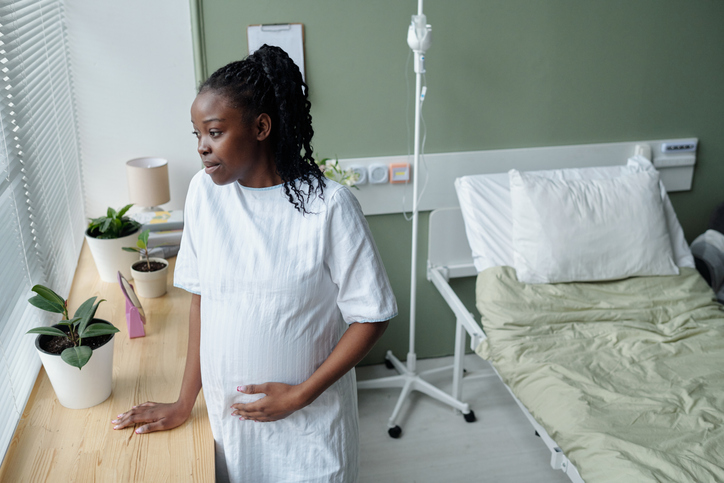Maybe it’s a societal shift. Maybe it’s advances in reproductive endocrinology. Maybe it’s increased access to information about sexual and reproductive health.
Most likely, it’s a combination of all those factors — but one thing that’s not up for debate is this: Fertility trends have shifted, and there’s data to prove that.
A new CDC National Vital Statistics Report indicates that fewer teens are becoming moms, while rates of women giving birth in their 40s have increased significantly.

The report analyzed data between 1990 and 2023 to gain insights into age-related fertility trends as well as the general decline in the number of births.
Here are some key findings on age-related fertility trends
According to the report, the actual number of births in the United States declined by 14% from 1990 to 2023.
This isn’t surprising: We’ve heard a lot of rumblings about the declining birth rate, with more and more people opting to remain childfree and others having smaller families (one-and-done families, for example, are getting more national attention). Thanks to environmental concerns, financial constraints, and a complete lack of structural support for families, more and more Americans are intentionally avoiding parenthood or opting to have smaller families.

Teen pregnancy rates trended down
Questions Women Are Asking
According to the report, teen pregnancies made up 12.8% of all births in the United States in 1990. By 2023, that rate was down to just 4%. In 1990, the rate of girls aged 10-14 giving birth was 1.2 of every 1,000 births; that rate dropped to 0.2 of 1,000 in 2023. And in people aged 15-19, the birth rate declined by 78%.
Birth rates among women in their 20s declined as well
For years, we’ve heard that your 20s are the optimal time to have a baby. And from a fertility standpoint, there’s some truth to this adage. Fertility begins to decline by age 30, according to the American Congress of Obstetricians and Gynecologists.
From a purely biological standpoint, a woman’s 20s are her fertility prime, but we can’t make family planning decisions in a vacuum. Economically and emotionally, many people aren’t ready for parenthood until their 30s or 40s, and thanks to advances in reproductive healthcare, waiting until those decades is a real possibility.
All that to say, birth rates among women in their 20s declined as well per this dataset. According to the report, rates of births among women aged 20-24 dropped 51%, while rates among women aged 25-29 dropped 24%.
But rates for women in their 30s increased
The birth rate among women aged 30-34 increased by 17%, while the rate (in 2023, this group represented the group with the highest rate of births), and a whopping 71% among women aged 35-39.
The increase is even more dramatic among women in their 40s
The rates of births among women aged 40-44 rose 127%, while the rate of women giving birth over 45 rose 450&.
Of course, it’s worth considering that the field of reproductive endocrinology has come an incredibly long way between 1990 and today, with technologies like egg freezing becoming more of a medical and cultural mainstay. That has certainly affected this uptick.
Will Roe v. Wade’s overturning reverse these trends?
But there’s another element here: In 2022, Roe v. Wade was overturned. We’re still waiting to see how exactly this change will affect fertility trends and birth rates, especially as this particular set of data only includes a small window of time in our post-Roe world. With threatened abortion and birth control access, the birth rate may tick back up, particularly among younger women and teens.
Information plays a role here as well
We’ve said it once, and we’ll say it again: Sex ed in the United States is broken. But by creating pathways to information access for women and girls, we can empower them to take greater control of their own reproductive health.
Access to menstrual, sexual, and reproductive health information can empower women not only to take greater control of pregnancy prevention but also to time pregnancies to line up with periods of financial security and emotional readiness for parenthood.
Perhaps the biggest takeaway from all this?
For the first time, more babies are born to women over 40 than teens in the United States. In 2023, 4.1% of births were to women over 40, while teen births were 4%. As we’ve previously shared, the term “advanced maternal age” doesn’t tell the full story, with women taking control of their reproductive health in the name of family planning. Because while biology is somewhat fixed, many women find themselves in a much better position to have children after 35, 40, or even 45.
Zara Hanawalt is a freelance journalist and mom of twins. She's written for outlets like Parents, MarieClaire, Elle, Cosmopolitan, Motherly, and many others. In her (admittedly limited!) free time, she enjoys cooking, reading, trying new restaurants, and traveling with her family.















.webp)










